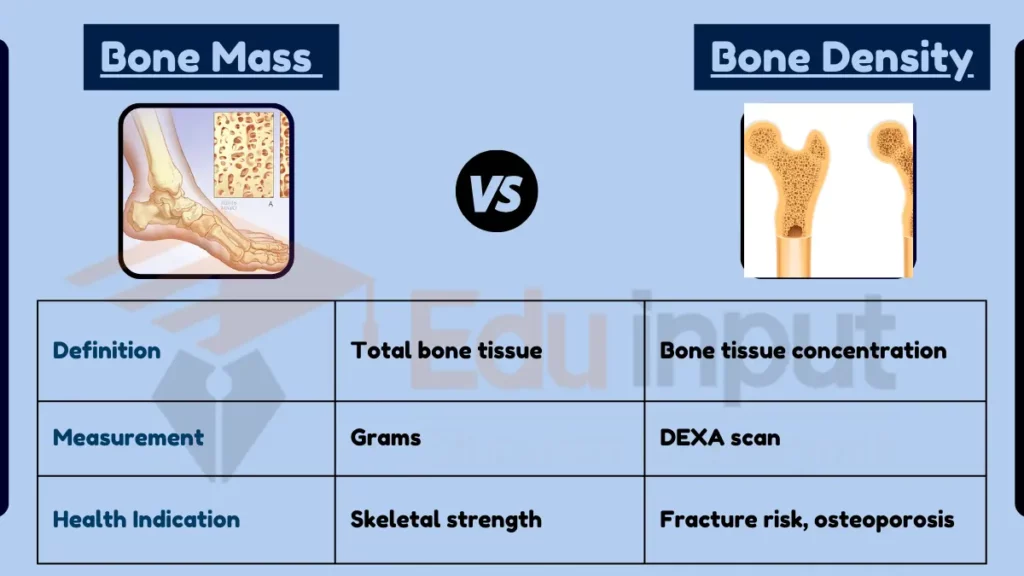Difference Between Bone Mass and Bone Density
December 24, 2023
Key Difference
Bone mass and bone density are related but distinct concepts in understanding bone health. Bone mass refers to the total amount of bone tissue in the skeleton. Bone density, however, describes the concentration of bone tissue in a specific volume of bone, indicating how dense and strong the bone is.

Comparative Analysis
- Definition and Measurement:
- Bone Mass: The total amount of bone tissue; measured in grams.
- Bone Density: The concentration of bone in a given volume; typically measured using a DEXA scan.
- Indication of Health:
- Bone Mass: Indicates overall skeletal strength.
- Bone Density: Determines risk of fractures, osteoporosis.
- Changes Over Time:
- Bone Mass: Peaks in early adulthood, then can decrease.
- Bone Density: Can vary based on factors like age, nutrition, physical activity.
- Clinical Relevance:
- Bone Mass: Important in growth and development.
- Bone Density: Critical for diagnosing bone-related diseases.
- Affected by:
- Bone Mass: Genetics, nutrition, overall health.
- Bone Density: Lifestyle factors, hormonal changes, certain medications.
Table Summary
| Feature | Bone Mass | Bone Density |
|---|---|---|
| Definition | Total bone tissue | Bone tissue concentration |
| Measurement | Grams | DEXA scan |
| Health Indication | Skeletal strength | Fracture risk, osteoporosis |
| Changes Over Time | Peaks then decreases | Variable |
| Affected by | Genetics, nutrition | Lifestyle, hormones |
Bone mass and bone density are crucial for assessing bone health, each providing different insights: bone mass indicating the total bone quantity and bone density offering a measure of bone strength and risk of diseases like osteoporosis.
File Under:






Leave a Reply